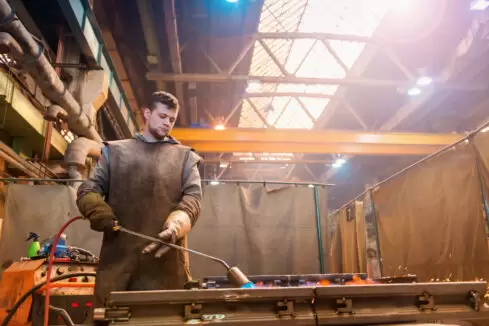In today’s world, there is a growing emphasis on sustainability and environmental responsibility. Not only do eco-friendly practices reduce the negative effects on the environment but they can also bring financial benefits. Here are some ways a manufacturing business can implement more eco-friendly practices with a focus on finance.
1. Improve Energy Efficiency in the Plant
One of the easiest and most productive ways to reduce the manufacturing impact on the environment is to reduce energy use. Start with an energy audit of your plant to reveal areas that are ready for improvement. Switching from incandescent or fluorescent lightbulbs to energy-efficient LED lighting is a simple way to reduce energy costs significantly.
Upgrade the HVAC system to an Energy Star-rated system. Evaluate machinery and consider replacing outdated equipment that is energy hogs. Investing in finance in new machinery can reduce your plants’ carbon footprint and increase productivity. It could be a win-win situation for your business and the environment. Additionally, when you finance new energy-efficient equipment, your company may be entitled to a tax rebate for the purchase.
2. Know What Your Level of Eco-Friendliness Is Right Now
This may sound unusual, but many manufacturers already have eco-friendly practices because they are good for their finance. For example, most plants do all they can to reduce waste because waste is expensive. Consider this, normalizing heat treatment used to increase ferric grains in steel to enhance consistency uses a lot of energy. However, according to the World Report, this type of ferrous metal is one of the most recycled materials; as of 2019, about 491 million metric tons were recycled.
In other words, your manufacturing company may already be using eco-friendly practices, but you are not aware that they are eco-friendly. It is essential that you evaluate your manufacturing practices!
3. Switch to Electric Vehicles
If your manufacturing business depends on a fleet to move goods, switching your fleet to total electric or hybrids can greatly reduce the manufacturing’s carbon footprint. Eco-friendly electric and hybrid vehicles are also an investment in reducing costs. When you finance new vehicles, there may also be some tax savings that your business can claim.
Roadcheck, a 72-hour blitz of inspections conducted by the Commercial Vehicle Safety Alliance, states that hybrid fleet vehicles significantly impact the environment. The Roadcheck initiative is a North American-wide initiative. This is why electric vehicles are crucial to switch to!
4. Work With Eco-Friendly Suppliers in the Supply Chain
Manufacturing plants can make a difference by working with eco-friendly suppliers. How raw materials are harvested and processed matters. By aligning with suppliers that are focused on sustainability practices, your manufacturing plant can reduce negative environmental impacts.
Looking to your supply chain to improve eco-friendly processes is essential to reducing your manufacturing business’s environmental impact. If you evaluate your supply chain and it turns out that you are not dealing with suppliers that are using sustainable raw material harvesting techniques, you may want to implement changes.
5. Look For Greener Options
For many manufacturers, can use greener offerings to substitute their current product line. When you finance a new product line that reduces waste as well as uses sustainable raw products, you can easily change the trajectory of your business. Green business is a big business. If your financial situation doesn’t allow you to introduce a whole new substitution for your product line, consider a slow and steady pace by replacing one or two products with greener, eco-friendly products.
With a little effort, any manufacturer can improve how they do business. When you invest some finance into improving the eco-friendliness of your manufacturing business there are measurable rewards that come with it. Learn more about how you can reduce the impact of your manufacturing business on the environment today.

